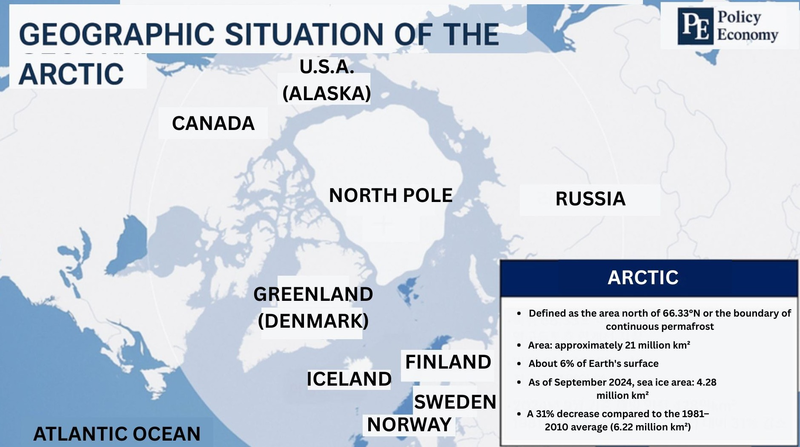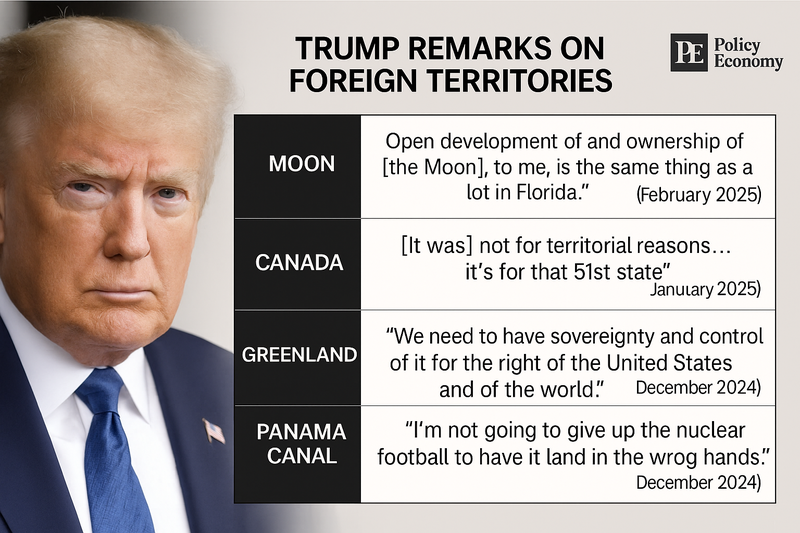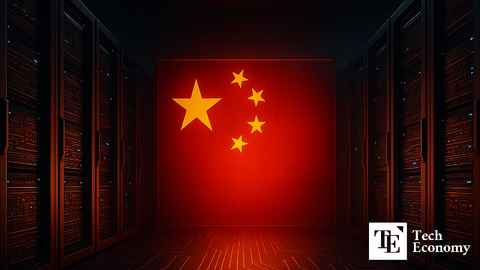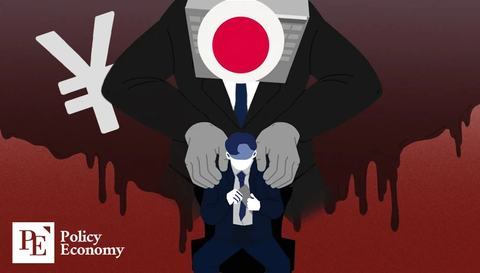As Arctic Route Opens, Power Struggle Intensifies — U.S.-Russia Tensions Rise, Urgent Need for Korea to Formulate Strategy
Input
Changed
The Arctic rapidly emerges as the shortest route between Europe and Northeast Asia Greenland’s importance rises as a strategic key point Urgent need for Northeast Asia to restructure global logistics strategy

As Arctic sea ice melts faster due to climate change, the Northern Sea Route bypassing the Suez Canal is emerging as a major global maritime logistics route. Accordingly, the U.S. and NATO are increasing military and diplomatic attention to counter Russia’s monopoly over the Arctic shipping lanes and strategic points like Greenland. East Asian countries, including South Korea and Japan, also urgently need to restructure their logistics strategies based on the potential use of the Arctic route.
Russia reacts sensitively to Western Arctic forward base developments
According to foreign media such as CNBC on the 25th (local time), Russia is responding sensitively as the U.S. and NATO emphasize the Arctic's importance for geopolitical and security reasons. Russia consistently asserts sovereignty over the Arctic, noting that it controls about 53% of the Arctic coastline and that approximately 2.5 million Russians reside in the region.
The growing tension around the Arctic stems from climate change. As Arctic ice rapidly melts, the once-imagined ‘Arctic route’ is becoming a reality. Experts expect that by 2030, parts of the Arctic will be navigable for more than eight months a year without icebreaker support. This route, running along Russia’s northern coast connecting Europe and East Asia in a straight line, will allow Asian countries like Korea and Japan to reach major European nations such as the Netherlands and the Baltic states directly—bypassing the Suez Canal.
This change signals a shift in global dominance beyond just opening new sea lanes. The strategic significance of traditional maritime hubs like the Suez Canal and the Strait of Malacca diminishes as Arctic countries rise in influence. Russia is particularly intent on leveraging the Arctic route along its northern coast as a second energy export channel and a maritime power base. Controlling this route means layered benefits across energy, minerals, and cargo transportation.
Meanwhile, the U.S. and NATO are increasingly strengthening maritime and aerial surveillance to check Russia’s Arctic route monopoly. This has military implications: the Arctic overlaps with sensitive missile defense systems and nuclear submarine transit paths, making it a strategic forward area. In March, NATO conducted extreme-environment combat readiness exercises in Norwegian waters involving 10,000 troops from nine countries.
Russia promptly showed vigilance. President Vladimir Putin described NATO’s exercises as “moves to enhance extreme environment operational capabilities and cooperation” and accused NATO countries of treating the Arctic as a potential conflict zone. Russia responded with its own Arctic exercises involving 20 Northern Fleet ships and around 1,500 personnel, reflecting the redefinition of the Arctic as a “strategic asset” beyond an icy sea.

U.S. shows ownership ambitions toward Greenland
Among regions gaining importance with the opening of the Arctic route, Greenland stands out. As an autonomous Danish territory near the North Pole and a gateway between the Atlantic Ocean and the Arctic Ocean, Greenland is expected to serve as a critical hub for vessels and military assets using the Arctic route.
The U.S. government, especially under former President Donald Trump, has focused on Greenland in its Arctic strategy. Since Arctic airspace is the shortest path for missiles targeting North America, Greenland is considered optimal for monitoring and countering Russia and China. Trump stated after winning the 2020 election that “the U.S. should own and control Greenland for security and global freedom” and later emphasized willingness to consider “military options” regarding Greenland. This suggests potential expansion of the existing Thule Air Base on Greenland.
This U.S. stance is perceived as a serious security threat by Russia. Since the Ukraine invasion, Russia has been sensitive to Western territorial expansions and strongly opposes Western military activity growth in the Arctic, including Greenland. The tense Arctic standoff could influence broader European and North American diplomatic landscapes, raising Greenland’s importance as a frontline security zone.
“Northeast Asia without an Arctic strategy risks falling behind in global logistics,” experts warn
With the Arctic route’s opening becoming a reality, East Asian countries face a critical moment to rethink logistics and industrial strategies. South Korea currently relies heavily on the transshipment logistics system centered around Busan Port within the global shipping network. If the Arctic route becomes fully operational, the main axis between Asia and Europe may shift from the Suez Canal to Russia’s northern sea, relatively weakening Busan’s strategic position.
A complicating factor is the unavoidable political and diplomatic burden on South Korea, Japan, and other U.S. security allies when using a route that requires cooperation with Russia. Experts agree on the urgent need for a “Korean-style Arctic maritime strategy.” Although the Arctic route offers unavoidable advantages in route diversification and logistics efficiency, there is criticism that Korea lacks the institutional, technological, and diplomatic foundations to systematically adopt it.
Joo Eun-jung, a research fellow at the National Security Strategy Institute, said in a report last month titled “The Arctic as a Pivot of Hegemonic Competition: The Arctic Strategy of the Second Trump Administration,” that “Domestic shipping companies face challenges such as designing ships optimized for the Arctic route, ensuring operational safety, and securing insurance and weather data systems.” She urged, “The current rise in Arctic geopolitical importance should be seized as an opportunity to promptly develop a comprehensive national ‘Arctic strategy’ plan.”





















